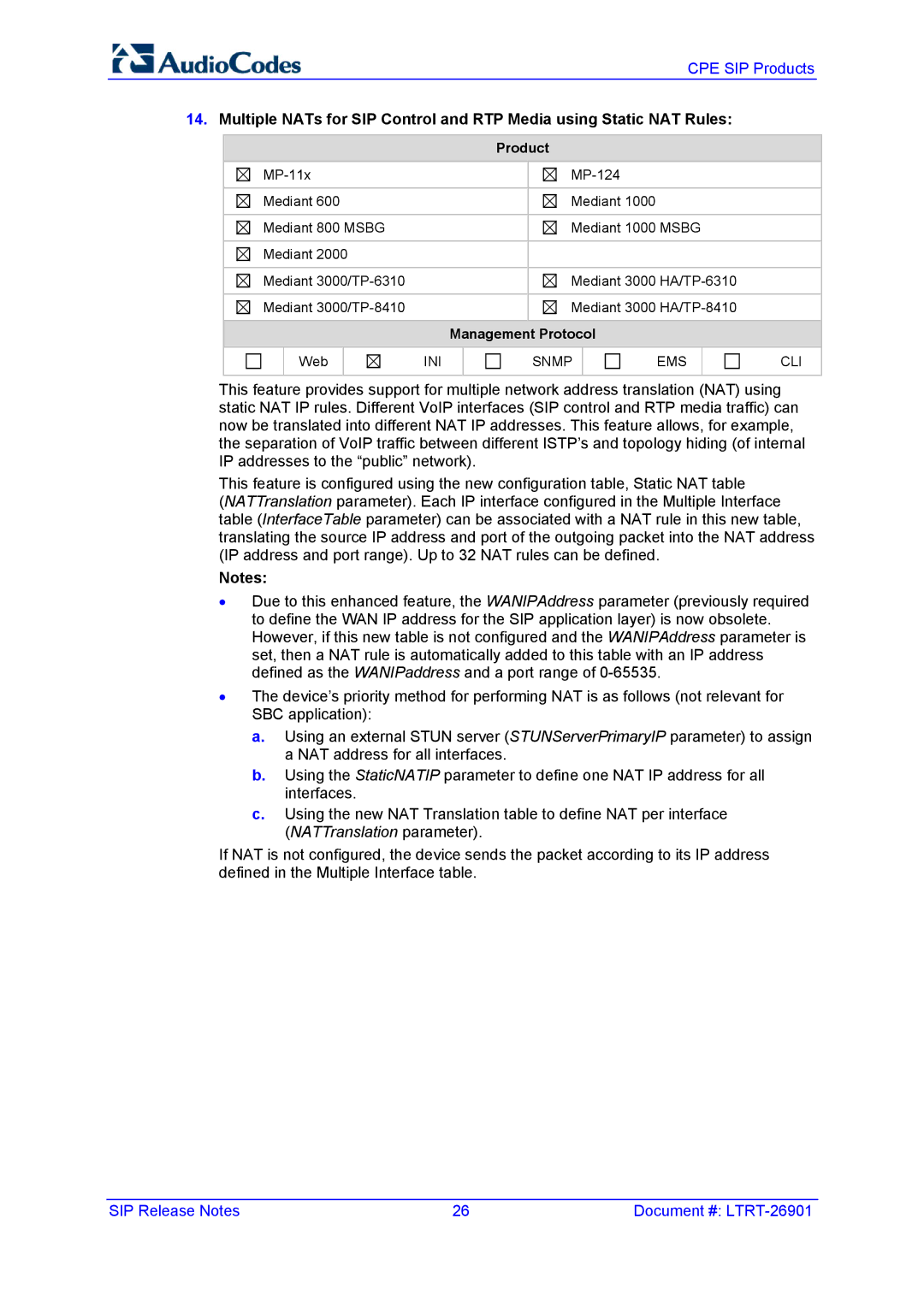
CPE SIP Products
14.Multiple NATs for SIP Control and RTP Media using Static NAT Rules:
| Product | |
| ||
|
|
|
Mediant 600 |
| Mediant 1000 |
|
|
|
Mediant 800 MSBG |
| Mediant 1000 MSBG |
|
|
|
Mediant 2000 |
|
|
|
|
|
Mediant |
| Mediant 3000 |
|
|
|
Mediant |
| Mediant 3000 |
|
|
|
| Management Protocol | |
|
|
|
Web
INI
SNMP
EMS
CLI
This feature provides support for multiple network address translation (NAT) using static NAT IP rules. Different VoIP interfaces (SIP control and RTP media traffic) can now be translated into different NAT IP addresses. This feature allows, for example, the separation of VoIP traffic between different ISTP’s and topology hiding (of internal IP addresses to the “public” network).
This feature is configured using the new configuration table, Static NAT table
(NATTranslation parameter). Each IP interface configured in the Multiple Interface table (InterfaceTable parameter) can be associated with a NAT rule in this new table, translating the source IP address and port of the outgoing packet into the NAT address (IP address and port range). Up to 32 NAT rules can be defined.
Notes:
•Due to this enhanced feature, the WANIPAddress parameter (previously required to define the WAN IP address for the SIP application layer) is now obsolete. However, if this new table is not configured and the WANIPAddress parameter is set, then a NAT rule is automatically added to this table with an IP address defined as the WANIPaddress and a port range of
•The device’s priority method for performing NAT is as follows (not relevant for SBC application):
a.Using an external STUN server (STUNServerPrimaryIP parameter) to assign a NAT address for all interfaces.
b.Using the StaticNATIP parameter to define one NAT IP address for all interfaces.
c.Using the new NAT Translation table to define NAT per interface (NATTranslation parameter).
If NAT is not configured, the device sends the packet according to its IP address defined in the Multiple Interface table.
SIP Release Notes | 26 | Document #: |
